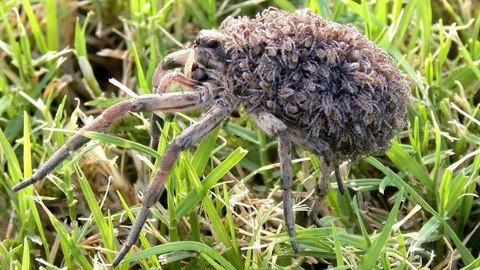And than there are Pistol Shrimp...
 These shrimp have one oversized claw that normally remains open. When prey come near, the claw is snapped closed, creating a jet of water traveling 60mph. Behind the jet of water a low pressure bubble forms, and then collapses, creating a very loud bang and a very bright flash of light. From start to finish, it takes 300 microseconds. The flash itself can last from 300 picoseconds to 10 nanoseconds. One picosecond is one trillionth of a second; try measuring that, because the researchers couldn’t.
These shrimp have one oversized claw that normally remains open. When prey come near, the claw is snapped closed, creating a jet of water traveling 60mph. Behind the jet of water a low pressure bubble forms, and then collapses, creating a very loud bang and a very bright flash of light. From start to finish, it takes 300 microseconds. The flash itself can last from 300 picoseconds to 10 nanoseconds. One picosecond is one trillionth of a second; try measuring that, because the researchers couldn’t.The very loud bang reaches 218 decibels (louder than a gunshot, and a group of these shrimp can hide a submarine from sonar), and the very bright flash of light means that the inside ...of the bubble reaches 5000 Kelvin (8540 degrees Fahrenheit/4726.85 degrees Celsius). That sounds hot, right? It should, because that is close to the temperature of the surface of the sun.
The shock wave kills prey, usually small fish, crabs, and other shrimp. The shock wave decimates enemies better than Raiden from Mortal Kombat. There are over 600 species in this family, mostly living in tropical waters.


No comments:
Post a Comment